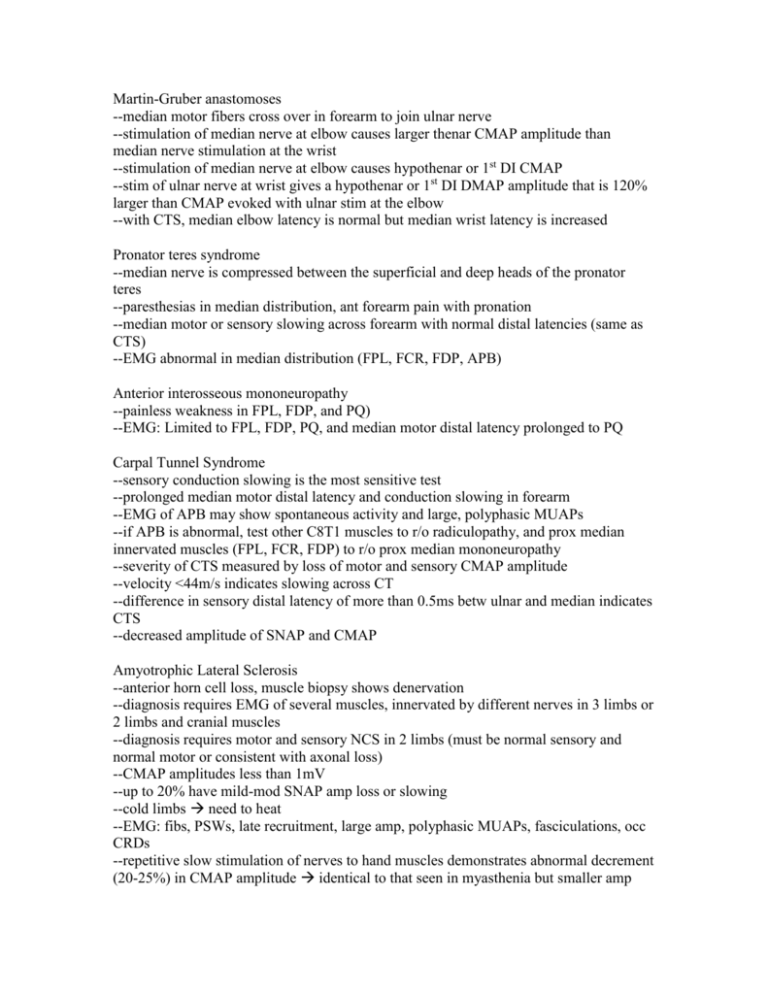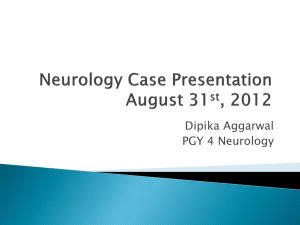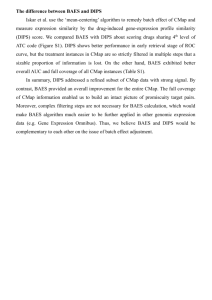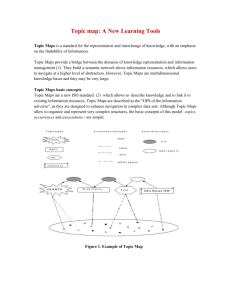Martin-Gruber anastomoses
advertisement

Martin-Gruber anastomoses --median motor fibers cross over in forearm to join ulnar nerve --stimulation of median nerve at elbow causes larger thenar CMAP amplitude than median nerve stimulation at the wrist --stimulation of median nerve at elbow causes hypothenar or 1st DI CMAP --stim of ulnar nerve at wrist gives a hypothenar or 1st DI DMAP amplitude that is 120% larger than CMAP evoked with ulnar stim at the elbow --with CTS, median elbow latency is normal but median wrist latency is increased Pronator teres syndrome --median nerve is compressed between the superficial and deep heads of the pronator teres --paresthesias in median distribution, ant forearm pain with pronation --median motor or sensory slowing across forearm with normal distal latencies (same as CTS) --EMG abnormal in median distribution (FPL, FCR, FDP, APB) Anterior interosseous mononeuropathy --painless weakness in FPL, FDP, and PQ) --EMG: Limited to FPL, FDP, PQ, and median motor distal latency prolonged to PQ Carpal Tunnel Syndrome --sensory conduction slowing is the most sensitive test --prolonged median motor distal latency and conduction slowing in forearm --EMG of APB may show spontaneous activity and large, polyphasic MUAPs --if APB is abnormal, test other C8T1 muscles to r/o radiculopathy, and prox median innervated muscles (FPL, FCR, FDP) to r/o prox median mononeuropathy --severity of CTS measured by loss of motor and sensory CMAP amplitude --velocity <44m/s indicates slowing across CT --difference in sensory distal latency of more than 0.5ms betw ulnar and median indicates CTS --decreased amplitude of SNAP and CMAP Amyotrophic Lateral Sclerosis --anterior horn cell loss, muscle biopsy shows denervation --diagnosis requires EMG of several muscles, innervated by different nerves in 3 limbs or 2 limbs and cranial muscles --diagnosis requires motor and sensory NCS in 2 limbs (must be normal sensory and normal motor or consistent with axonal loss) --CMAP amplitudes less than 1mV --up to 20% have mild-mod SNAP amp loss or slowing --cold limbs need to heat --EMG: fibs, PSWs, late recruitment, large amp, polyphasic MUAPs, fasciculations, occ CRDs --repetitive slow stimulation of nerves to hand muscles demonstrates abnormal decrement (20-25%) in CMAP amplitude identical to that seen in myasthenia but smaller amp Myasthenia Gravis --antibodies to Ach receptors on post-synaptic membrane --Decreased MEPP (80% of normal) and EPP amp --repetitive nerve stimulation: slow RNS (2-5 Hz) gives decremental response (>10% drop), fast RNS (>5 Hz) has no effect due to Ca accumulation --after isometric contraction, there is increment of initial CMAP amp postactivation depression at 5 and 10 mins post contraction --EMG: variable amp in single volitionally recruited MUAPs, no spont activity Lambert-Eaton Myasthenic Syndrome (LEMS) --antibodies to pre-synaptic voltage-gated calcium channels --MEPP amp normal because number of Ach per quanta is normal, but fewer quanta released --EPP amp low --baseline CMAP amp very small (<1.5mV) --RNS: slow RNS gives decremental response similar to in MG, fast RNS shows incrementing response --isometric contraction shows huge increment in initial CMAP amp (>200% is diagnostic) --EMG: marked variability in moment to moment MUAP amp, no spont activity Botulism --binds to presynaptic terminal, reducing number of quanta released --very small CMAP amp --no or minimal decremental response with slow RNS, incremental response with fast RNS --EMG: occ spont activity --NCS conduction velocities and distal latencies normal Brachial Plexus Injury --supraclavicular: flexors and extensors paralyzed --infraclavicular: only flexors or only extensors paralyzed --root avulsion: SNAP amp normal in a desensate digit, CMAP amp reduced --neuropraxia: normal SNAP and CMAP amp --plexopathies: decreased SNAP amp







